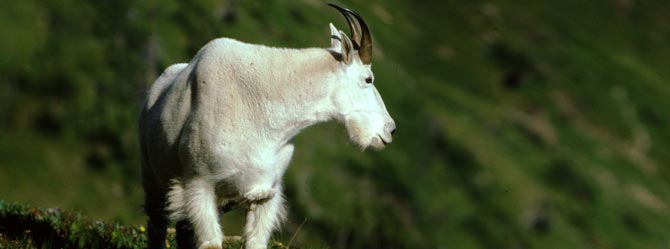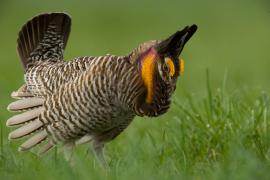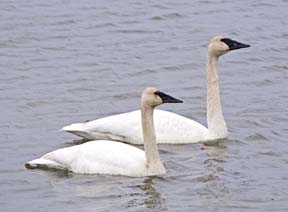 The Wyoming Game and Fish Department recently captured four mountain goats in the western part of the state as part of an on-going study into the animals’ travel between Idaho and Wyoming, says an Associate Press article in the Billings Gazette.
The Wyoming Game and Fish Department recently captured four mountain goats in the western part of the state as part of an on-going study into the animals’ travel between Idaho and Wyoming, says an Associate Press article in the Billings Gazette.
An article in the Caspar Star-Tribune adds that, “the goats were tranquilized while biologists collected nasal and tonsil swabs, blood and fecal samples.”
Mountain goats are not native to Wyoming, the articles state. But apparently, they are native to adjoining Idaho. After being reintroduced to Idaho, some of the mountain goats wandered over to Wyoming.
Photo: Mountain goat, courtesy of the Wyoming Game and Fish Department


 Greater prairie chickens are booming again this spring in Wah-Kon-Tah Prairie, Missouri. The species had been extirpated from the area until five years ago when the Missouri Department of Conservation translocated some greater prairie chickens from Kansas.
Greater prairie chickens are booming again this spring in Wah-Kon-Tah Prairie, Missouri. The species had been extirpated from the area until five years ago when the Missouri Department of Conservation translocated some greater prairie chickens from Kansas.